Organic social media growth is all about building real connections without a big ad budget. With a strong social media strategy, you can attract loyal followers who genuinely love your brand.
This approach to social media marketing isn’t about selling—it’s about engaging. By focusing on what your audience values, you create a community that’s eager to interact and share.
In this article, you'll discover a roadmap to organic social media success. We'll explore strategies for building trust, fostering engagement, and driving conversions. You'll also learn how to identify the right audience and social channels for your B2B brand.
Table of Contents
What does organic growth on social media stand for?
Benefits of organic growth on social media
Organic growth strategies that will make a brand known on social media
Bonus tips on how to fuel social media growth
Examples of organic growth achieved by B2B brands
What does organic growth on social media stand for?
Organic social media growth represents a brand's social expansion through non-paid promotional activities, including follower growth and increased reach and engagement.
How can a brand grow through social media and deploy a social media strategy without spending a fortune on paid advertising?
It's all about building a loyal following and increasing brand awareness through authentic content and genuine interactions with an audience.
Organic growth is often seen as more valuable than growth driven by paid ads, indicating that the content resonates with the intended target audience and drives organic engagement. It looks different for each business and depends on available resources, budget, overall market goals, and, yes, paid marketing strategies!
9 benefits of organic growth on social media
When it comes to the benefits of organic social media growth, the list compiles quite a few. Organic strategies like quality content, interaction, and community building help foster authentic relationships with followers, driving better engagement and word-of-mouth promotion.
But let’s take it one at a time, shall we?
#1. Build trust
Building trust with an audience on social media is a marathon, not a sprint. It takes time, consistent effort, and a commitment to delivering high-quality content.
Trust is earned, not given, and is essential for long-term success in social media.
A brand can establish itself as reliable and trustworthy by consistently appearing on chosen platforms and providing valuable content that resonates with an audience.
Once a brand is trusted, they’ve established customer loyalty. There is no need to constantly encourage this audience to engage with their content and support their business, as they will do so without prompting and with much enthusiasm.
Building trust is an ongoing process that requires dedication and perseverance, but once earned, it changes customers into loyal and raving fans!
#2. Foster long-term relationships with an audience
Fostering long-lasting relationships with an audience, aka retention marketing, is a cornerstone of organic social media growth. Retaining customers is done through nurturing connections, fostering loyalty, and creating a sense of community around a brand.
Here are some ways to retain customers:
- Listen to the audience: Social listening is an often overlooked strategy for growth. Pay attention to feedback and suggestions from followers. Accomplish this by deploying social listening tools and having a dedicated community manager or social media manager in charge of engagement and community! Listening and showing up to conversations shows that the brand cares and values input and is committed to improving the overall customer experience.
- Create a (real) sense of community: A real community comes to life when customers start talking to each other! Encourage this interaction, and listen in as they share their experiences with the brand. This fosters a sense of belonging and loyalty and provides incredible insight into a customer‘s journey and contentment.
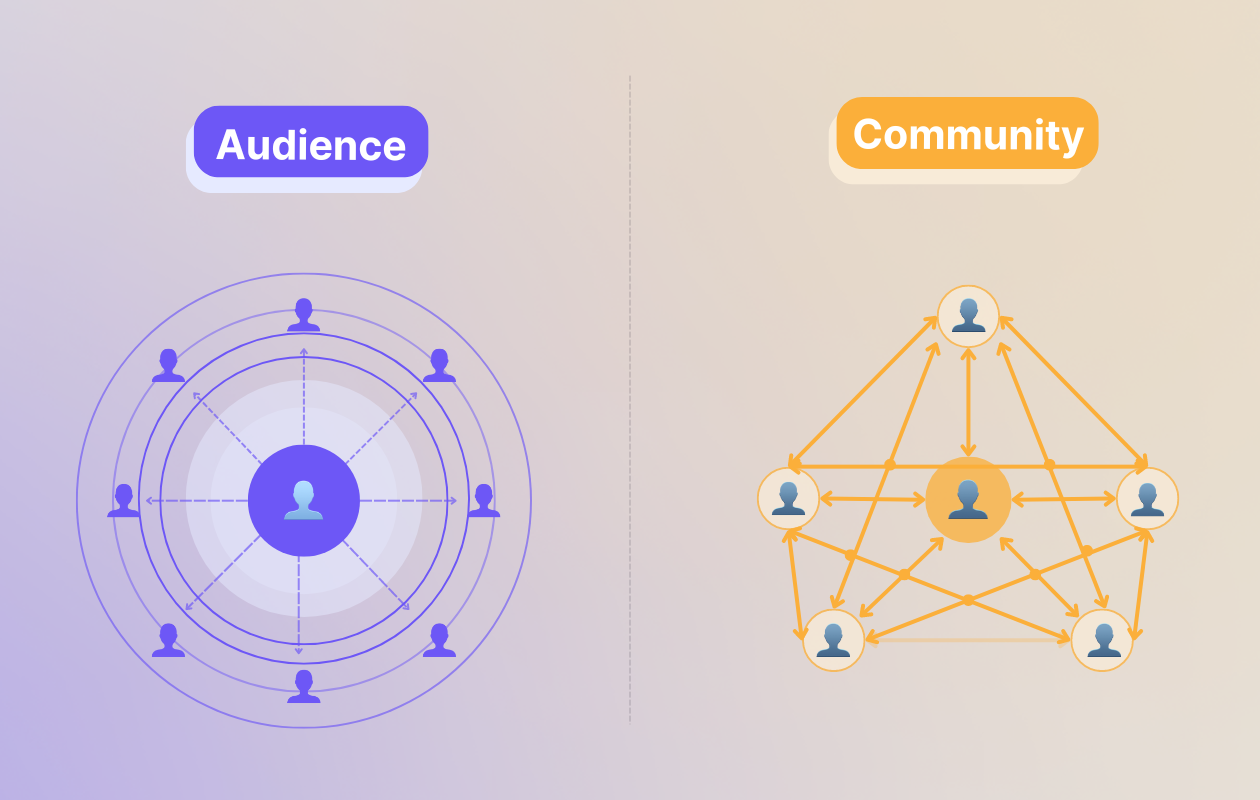
- Share behind-the-scenes content: Any audience loves seeing the company culture and values. It connects them to the brand and creates a sense of authenticity. Give them what they want; share outtakes, office parties, travel shenanigans, and more.
#3. Enable reach expansion
High-quality, engaging, and entertaining content is likely to be shared by followers, introducing the brand to new audiences and expanding the brand’s social media reach. This also positively impacts a brand's search engine rankings and makes it easier for potential customers to discover the brand.
This increased visibility can lead to more website traffic leads, ultimately leading to conversions.
#4. Enhance overall brand reputation
Organic social media is a powerful tool for building an excellent reputation for any brand. Think of it as an opportunity for a one-on-one conversation with an ideal customer 100x over!
When a potential customer engages with organic content and interacts with a brand, it shows they understand and appreciate the product or service. This positive interaction builds trust and positions the brand in a positive light.
Showcasing a brand's personality and values through social media is a great way to establish the brand as a thought leader in the industry.
A brand can show they care about their customers by promptly responding to online comments and questions.
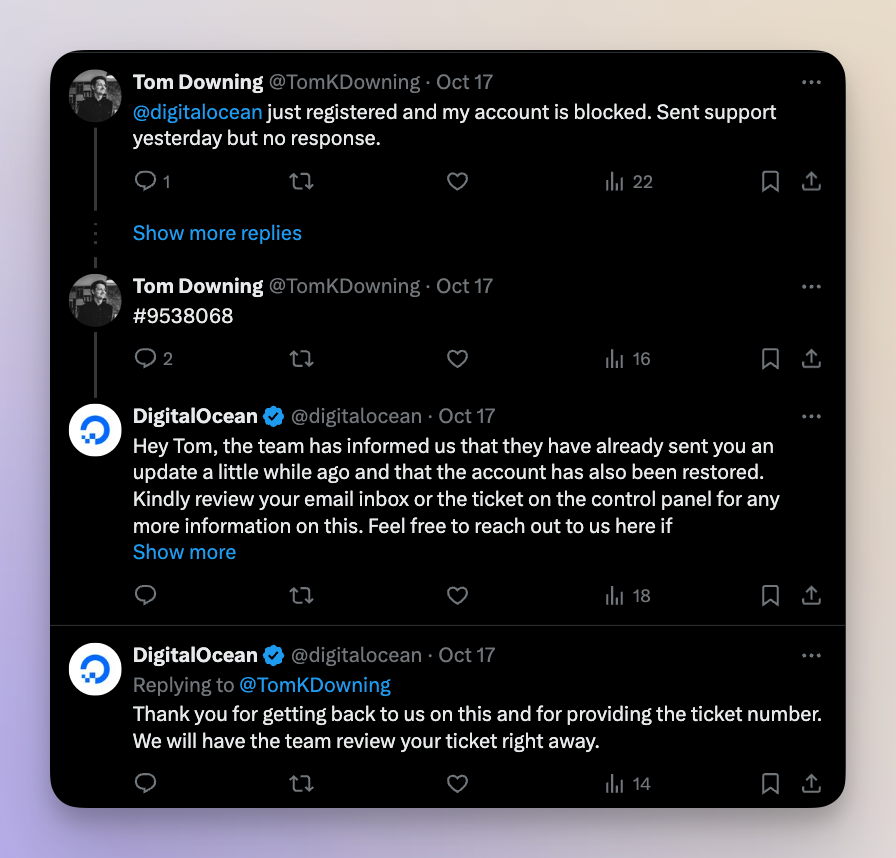
When satisfied customers create and share positive experiences with a brand online in testimonials and social media posts, these act as social proof and attract new customers.
Cultivating a community that advocates for the brand solidifies its reputation in the online marketplace.
#5. Boost conversions for the brand
Social media is a powerful tool for driving web traffic, conversions, and sales. When an ideal audience engages with organic content and interacts with a brand, it indicates a genuine understanding of the value offered. This kind of informed engagement directly translates to higher conversion rates and leads to success.
Organic content plays a crucial role in driving conversions. High-quality and highly targeted content educates clients about offerings and how they solve their problems, leading to informed purchasing decisions, more leads, and more sales.
#6. Improve brand SEO
When a target audience member engages with organic content and interacts with a brand, it indicates a genuine understanding of the value offered to search engines.
When an audience shares content, it introduces a brand to new people, expanding its reach and improving its online visibility. When other websites link to a brand’s content, it signals to search engines that it is valuable and relevant, boosting search engine rankings.
A simple yet powerful way to improve a website's keyword ranking is to use relevant keywords in social media posts. Google loves this kind of informed engagement. A well-thought-out and adequately executed organic social media content strategy significantly improves a brand's SEO and increases online visibility.
#7. Support long-term marketing goals
Social media is like playing the long game! It is a sustainable marketing approach that supports long-term business and marketing goals.
Content marketing, by definition, is marketing that aims to attain long-term goals.
Using specific content pillars for social media and implementing an organic growth social media strategy allows for this continued growth. Along the way, it will enhance a brand's reputation, thus earning the title of ‘trusted’ and ‘respected’ in their industry.
#8. Allow for diversified content
Organic socials should be the playground for all your content ideas. It’s the perfect testing ground for new content formats, content buckets, and your team's most outlandishly, crazy ideas!
As it’s harder to stand out, organic social media testing will show you what makes an audience respond to content using compelling copy and exceptional visuals. Being different is better than being better than your competition.
#9. Reduce a brand’s reliance on paid media
Lastly, a well-executed organic social media strategy can help reduce reliance on paid advertising by driving organic traffic and engagement. That is to say, if done correctly.
A brand can accomplish this by crafting high-quality content that resonates with its target audience, actively engaging with its followers, and optimizing their posts for discoverability.
Organic social media, in a way, warms up an audience for paid advertising by building brand awareness and trust, making paid ads more effective.
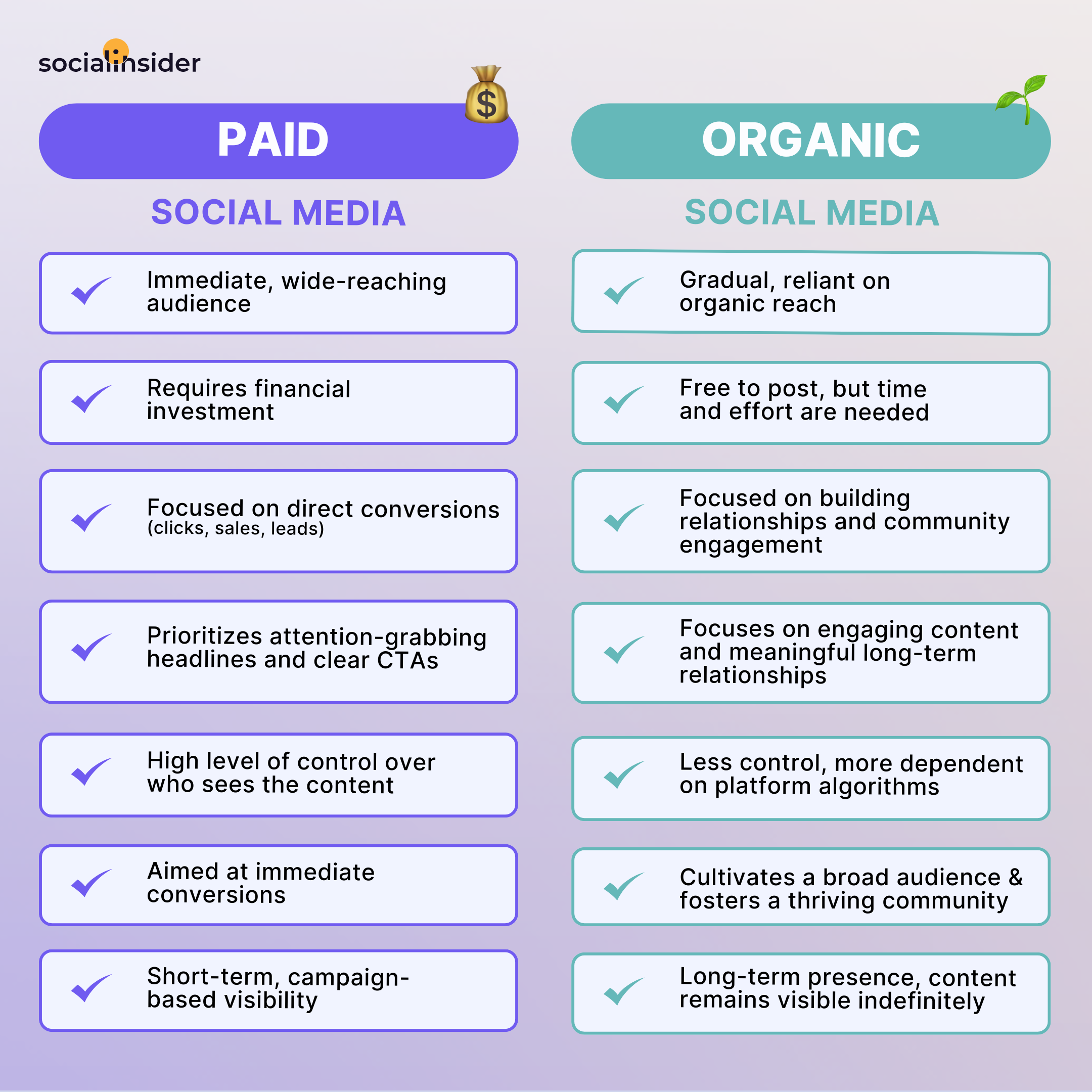
Now that we’ve explored the benefits of organic growth strategies, it’s time to lay out specific growth strategies that work for brands like yours!
Organic growth strategies that will make a brand known on social media
It’s not enough for most brands to know they are growing and expanding their social media reach and online influence. For them, it is essential to be known.
To be known as the leading experts.
To be known as an industry leader.
To be known for their customer service, innovation, product, or service.
A brand can choose what it wants to be known for and work toward that specific goal. Organic social media lends itself beautifully to brand awareness and to being known.
Want to know how to organically grow social media?
Here is how brands like yours can use growth strategies to reach these social media goals.
Establish a target audience
Understanding the target audience is the cornerstone of effective organic social media growth. It’s not just about knowing who your potential customers are but also understanding their desires, pain points, and the language they use.
Knowing your audience is vital when relevant content needs to be created. Tailored content leads to higher engagement rates, which in turn helps posts reach an even wider audience. When a brand consistently provides value to its audience, they are more likely to trust the brand. This can lead to increased loyalty and customer satisfaction.
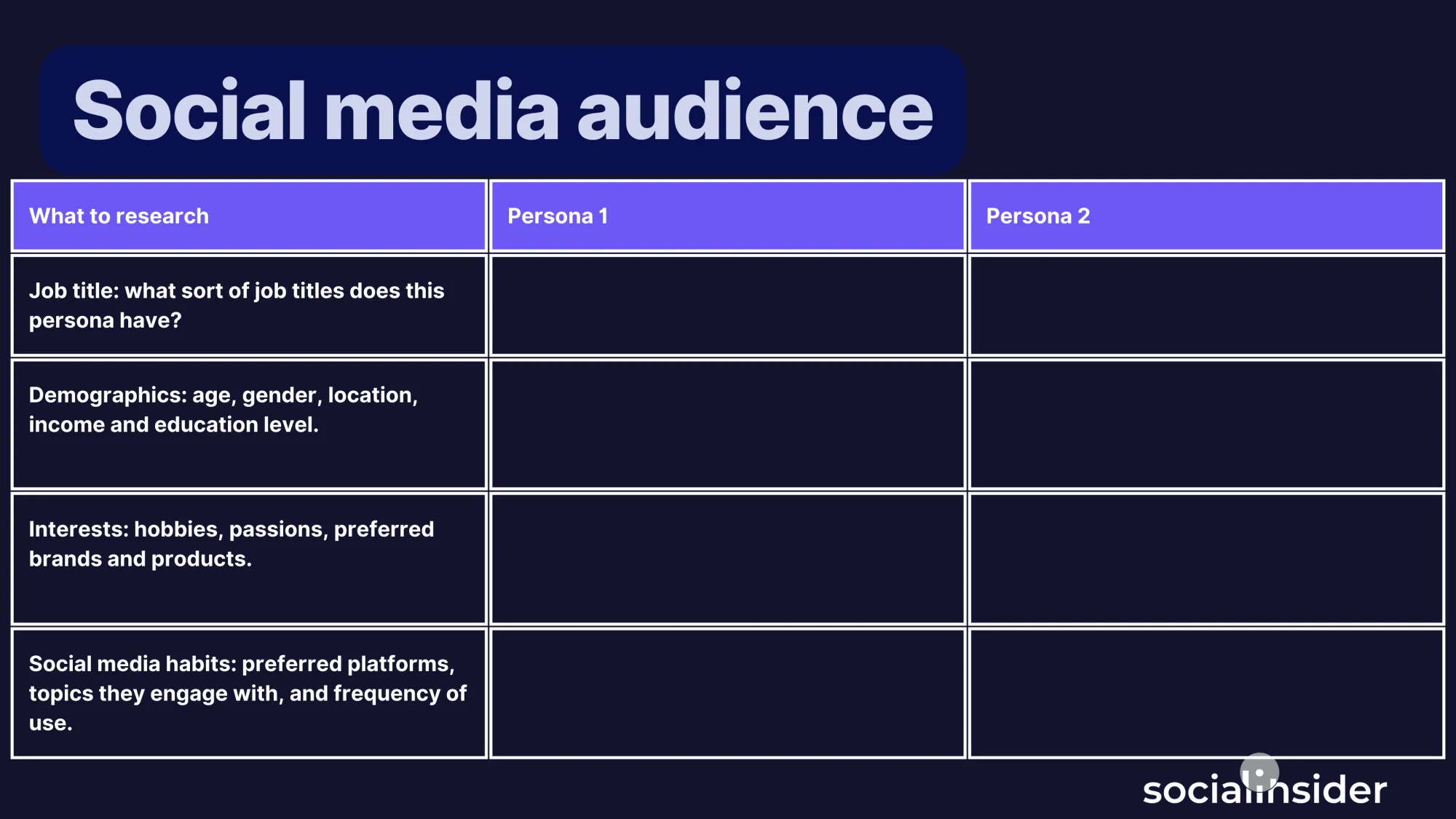
Tools like Facebook Insights and X Analytics can analyze your audience’s demographics, interests, and behaviors.
Another way of knowing your audience is to conduct surveys and polls to gather direct feedback from followers and interview customers to learn more about their experiences with the brand.
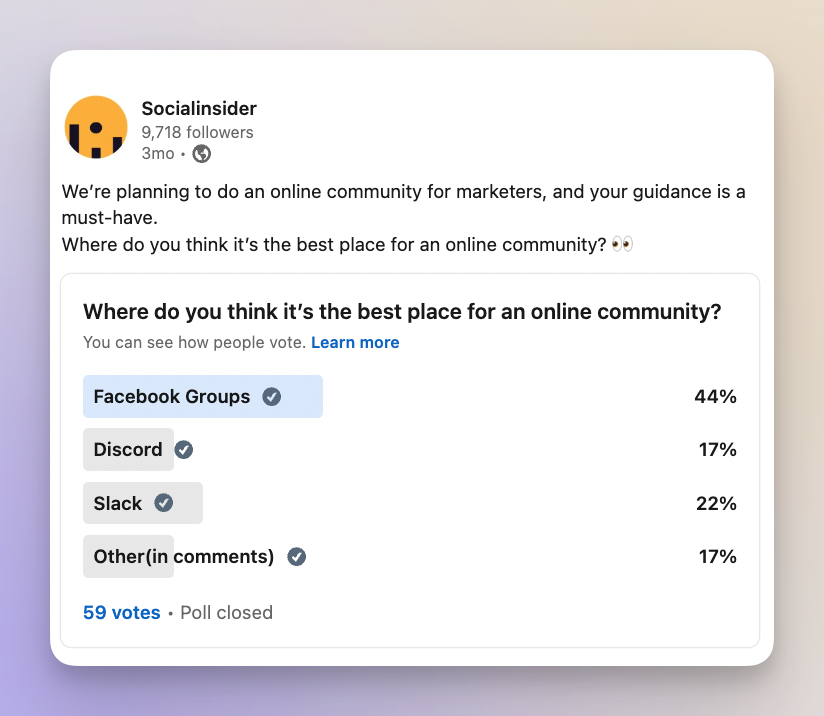
Lastly, analyze competitors’ audiences to identify trends and opportunities. In addition, 3rd party social media analytics tools like Socialinsider streamline this process and allow marketers to stay on top of their data!

It is essential to speak to an audience in a way that they understand by using the same terms and phrases that they use. This allows a brand to create social media content that solves its audience’s problems and addresses their concerns.
When a brand offers value to its audience, information, entertainment, or inspiration, it builds the foundation for a loyal following and drives organic growth.
Choose the social media channels wisely
Not all platforms are created equal, and choosing those that align with the brand’s vision, mission, target audience, and goals is essential.
Channel selection is vital because when a chosen channel hosts a coveted target audience, a brand can quickly increase its visibility and reach, taking advantage of this activity on those platforms and reaching the audience where they are most active.
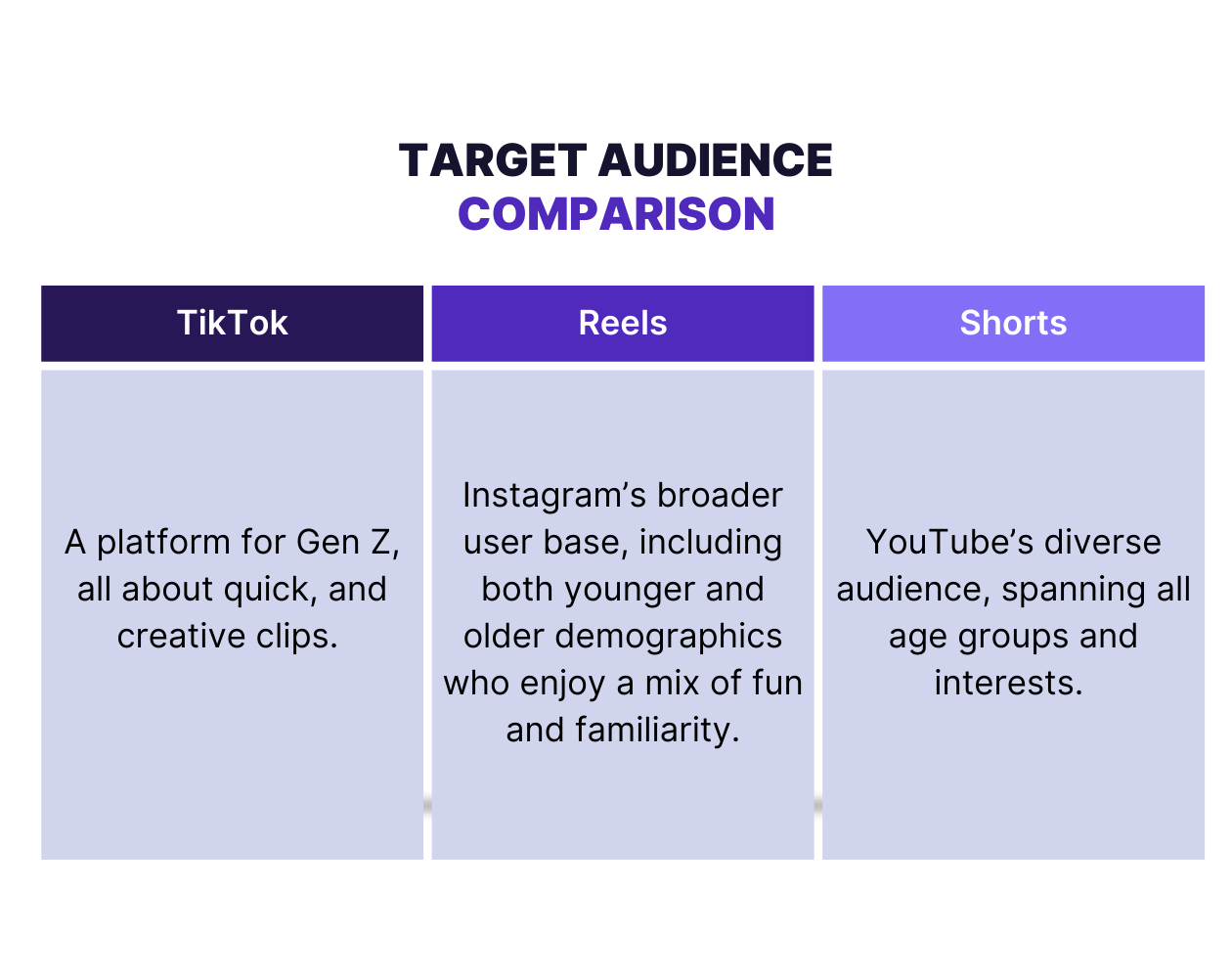
Some platforms are better suited for certain types of social media content and specific audiences.
For example, Instagram is ideal for visual content, while X is good for short-form news and industry updates.
LinkedIn is great for thought leadership and growth opportunities, which is great for B2B brands.
While Facebook is an excellent place to build a community, TikTok is the ideal platform to reach Gen Z, and Instagram is the best place to meet and engage millennials.
Embrace consistency in posting
Consistency is key when it comes to organic social media growth. Why? Regularly posting high-quality branded content keeps an audience engaged and helps a brand establish a solid online presence.
When an audience knows when to expect new content, they are more likely to be active and engaged; this is why consistency is a significant growth strategy.
Consistent posting also aids search engine results, increasing visibility. Regularly sharing valuable content positions a brand as an authority in its industry, which can attract new followers and customers.
Once you get more social media followers, this cycle continues and can boost social media followers numbers significantly.
A well-structured content calendar allows for efficient planning and scheduling, ensuring consistent posting that aligns perfectly with the brand's personality and any relevant social events.
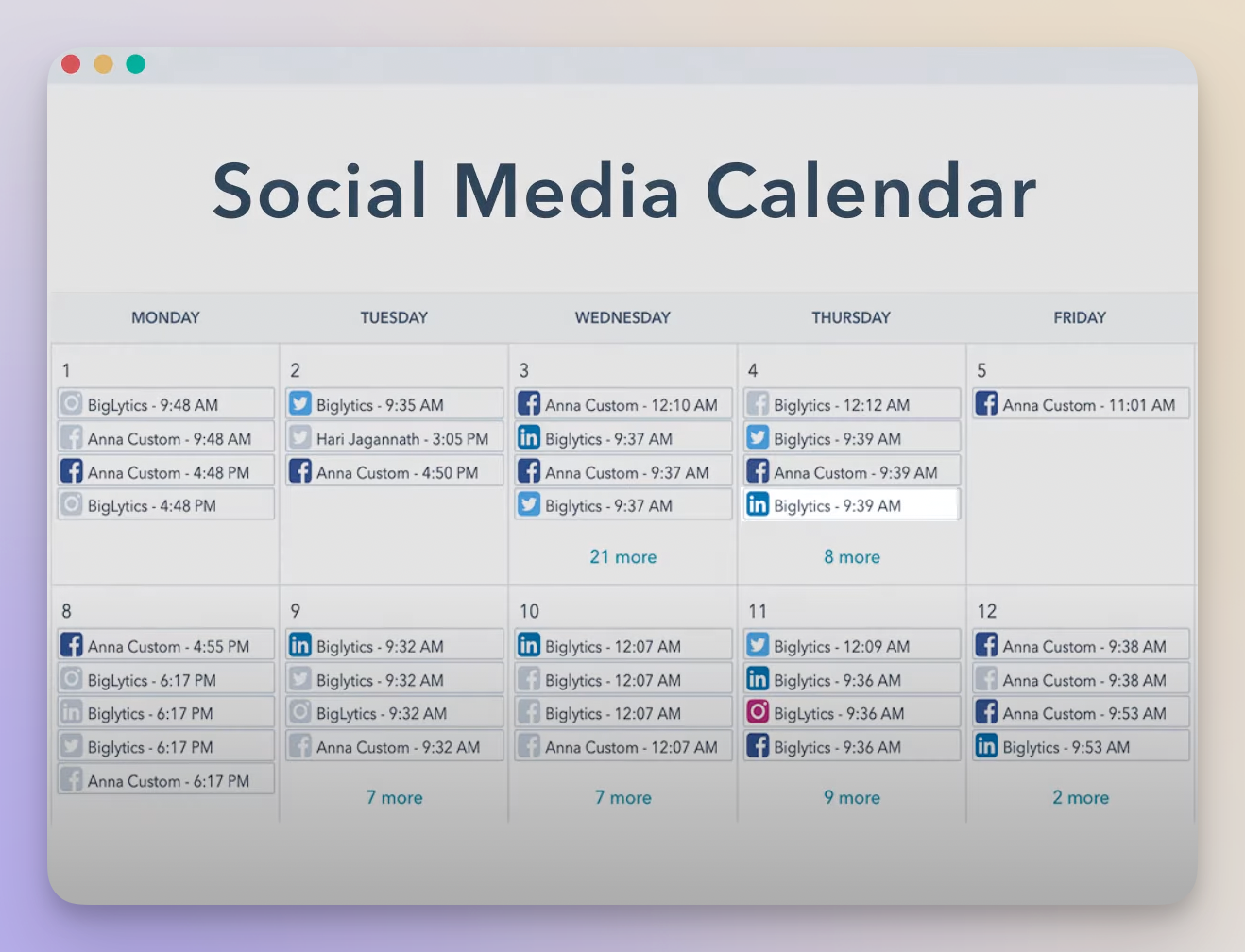
Continually test post formatting
Social media is a fast-moving industry. What is hot today, is tomorrow’s old news.
In this ever-evolving landscape, experimenting to see what resonates best with an audience is vital to staying ahead of the competition. Test various post formats to optimize content for maximum reach and engagement. Organic social media is the perfect place for testing and experimenting!
Different social channels have different visual cues, user behaviors, and features. What works well on one platform may be less effective on another.
As a brand tests different formats, identifying the most engaging styles for each platform becomes easier. They may also discover new ways to present content, keeping their audience interested and engaged.
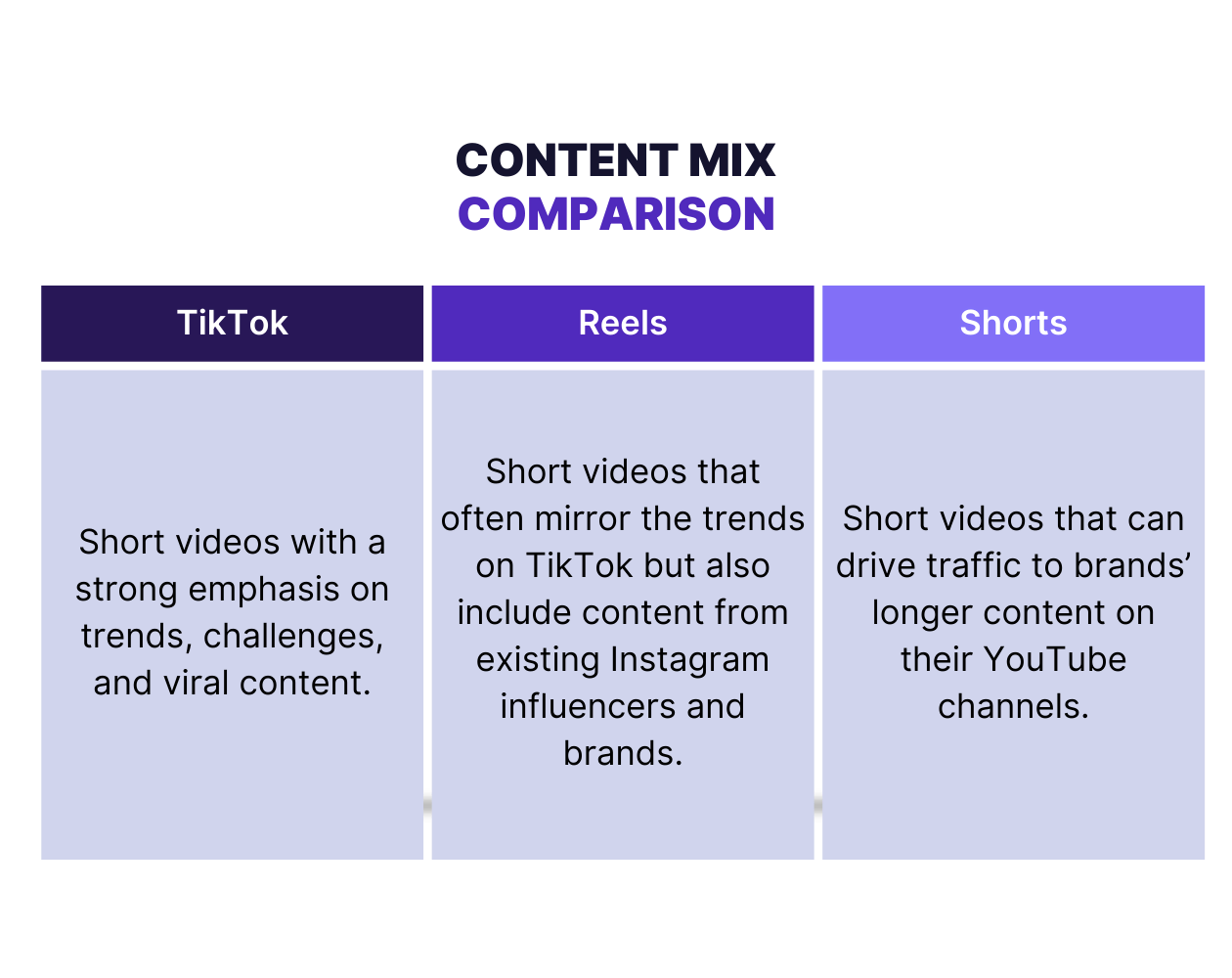
Testing is as uncomplicated as starting with one piece of content in different formats such as images, videos, carousels, and stories. Another place to test to to vary captions; this includes different lengths, tones, and styles of the copy. Last but not least, test a variety of calls to action to see which ones drive the most engagement.
As always, when experimenting, track data closely.
Offer value at all times
When a brand consistently offers valuable content, followers are likelier to engage with their posts and share them with their network.
If you want to know how to grow social media followers, offering value is an excellent start! A brand needs to offer unique and valuable content to be seen as a trusted source of information to a current potential customer.
Offering value at all times will lead to increased loyalty and customer satisfaction, as people are more likely to engage with informative, entertaining, and helpful content.
Sharing industry news and insights offers instant value to your audience. Keep followers informed about the latest trends and developments in their industry by creating tutorials, guides, and other resources. Entertain by sharing funny memes, inspiring quotes, or other forms of entertainment that an audience will enjoy.
Don’t bore them with product or service features to grab an audience's attention. Instead, address your audience's pain points by spotlighting the benefits of your product or service and providing solutions to their problems.
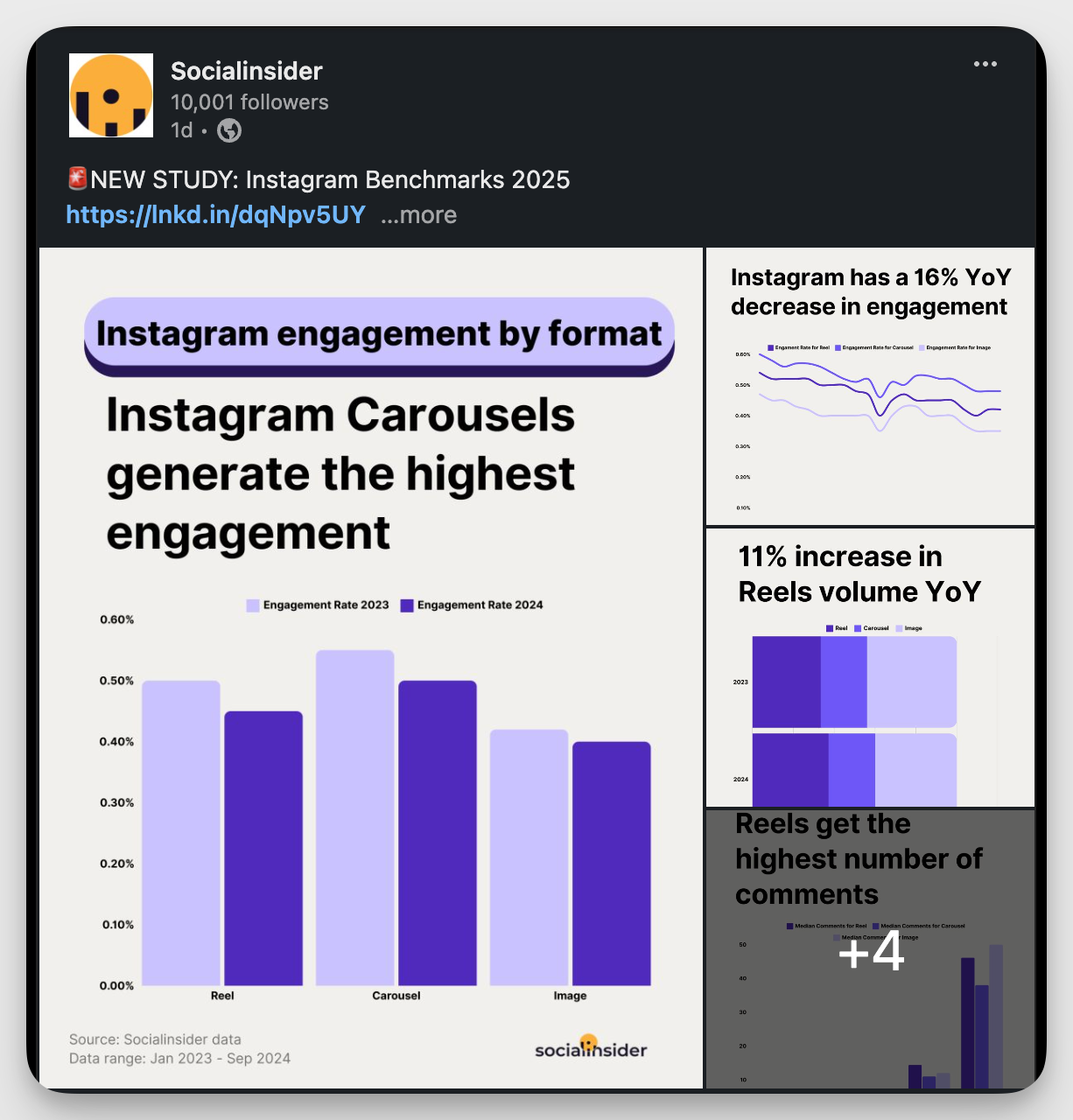
Be authentic
Authenticity is a powerful tool for any brand that stands out and wants to drive organic growth.
When an audience sees that the brand is genuine, they are more likely to trust it. This leads to increased loyalty and customer satisfaction. Authenticity can help a brand stand out from the crowd in a world of bland, cookie-cutter brands. People are more likely to engage with content that is genuine and relatable.
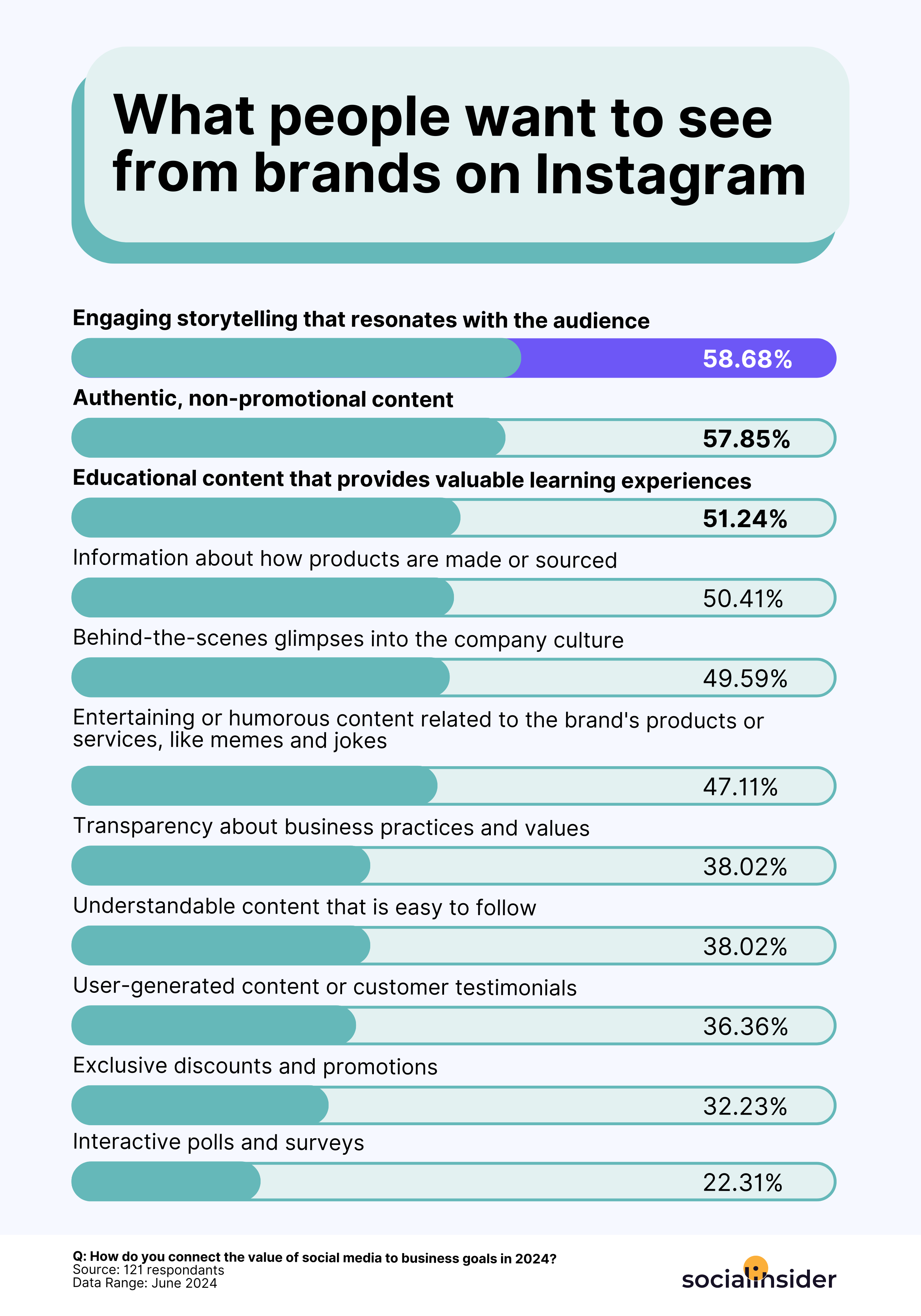
To show up as your authentic brand, look to the brand’s mission, vision, and core principles. This will set the tone for a consistent brand voice. Authenticity starts with transparency. Share brand stories and engage the audience genuinely and authentically.
Create a community of loyal supporters
Effective community management is essential to fostering brand-customer relationships and driving sustainable organic growth simultaneously.
A community of loyal supporters can be established by actively listening to an audience, responding promptly to comments and messages, and addressing concerns. When an audience feels valued, heard, and seen, they stick around and become lifelong brand ambassadors.
Demonstrating that customer input is valued builds trust, fosters loyalty, and creates a sense of community around a brand. Community management allows a brand to gather valuable insights directly from its audience. It enables a more tailored approach to content creation and social media strategies that fit specific needs and preferences.

People worry so much about what to post, how often, and when, but the best tip for organic social growth is to ENGAGE. See posting as the beginning of a conversation, not the end of the process. Respond to comments in a way that gets sub-conversations going, and stay in those conversations. - Christine Gritmon, Content Strategist
Deploy user-generated content
Using user-generated content (UGC) in marketing is a tactic, not a strategy. It is, however, a valuable asset for organic social media growth. An audience that is encouraged and potentially rewarded for creating and sharing content related to the brand will be engaged.
Offer incentives for creating and sharing content related to the brand in a closed social media community or via DMs, by running contests and giveaways. Branded hashtags that an audience can use to share their content will allow the brand to track social media reach engagement.
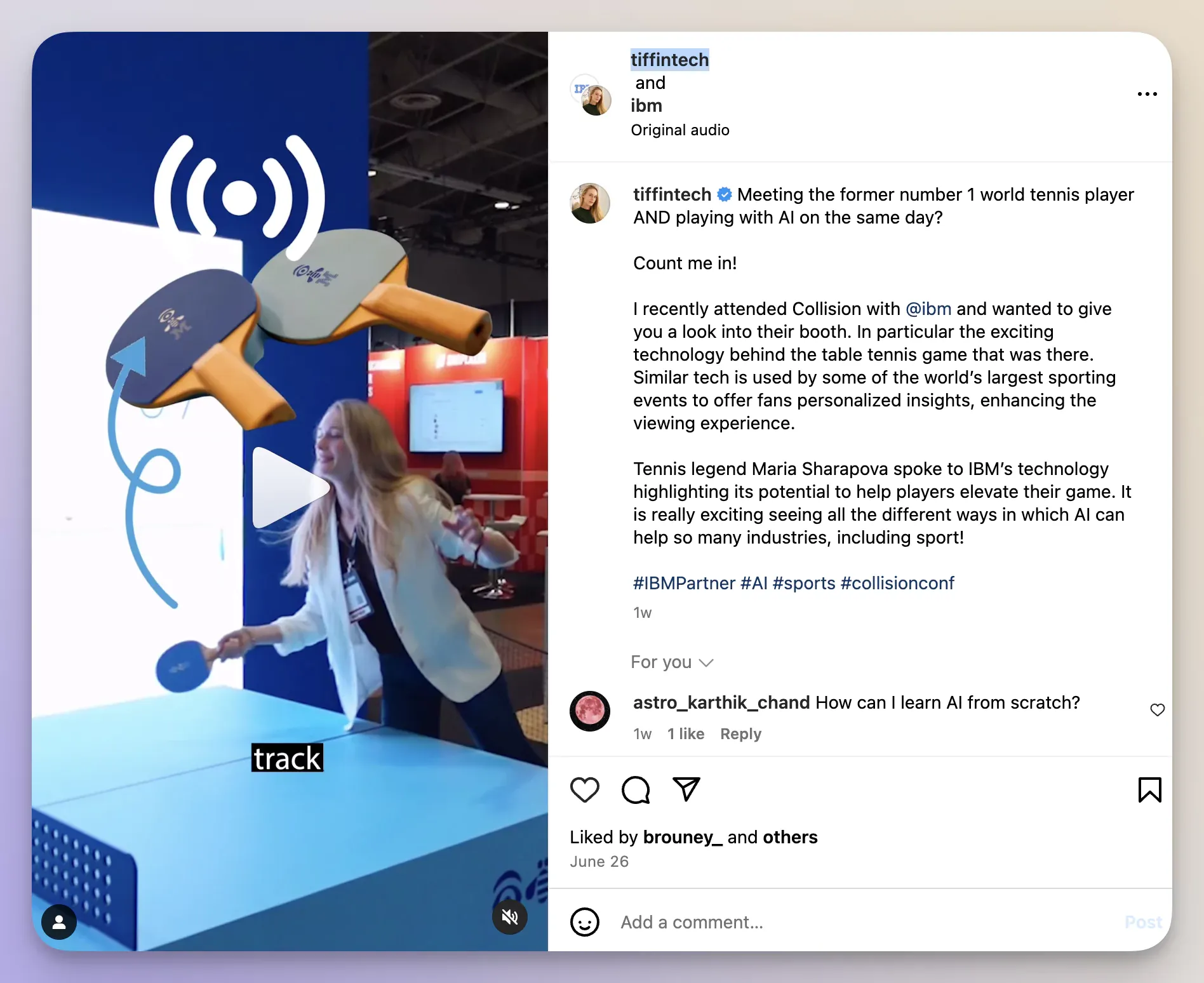
User-generated content is more authentic than traditional marketing content, created by real people who genuinely connect to the brand. This is why user-generated content is essential; UGC serves as social proof, demonstrating that other people are happy with the brand’s products or services.
Optimize based on performance insights
Analyzing social media performance metrics helps identify areas for improvement and allows a brand to make data-driven decisions to drive growth.
Brands should use social media data and insights to find the best posting times for their social media personas and analyze social media engagement to determine optimal times.
Experimenting with different content formats and identifying the most engaging types of content is another way to use performance.
Using social media analytics to track social media ROI.
Determine the effectiveness of all organic and paid social media campaigns and make data-driven decisions about your budget allocation.
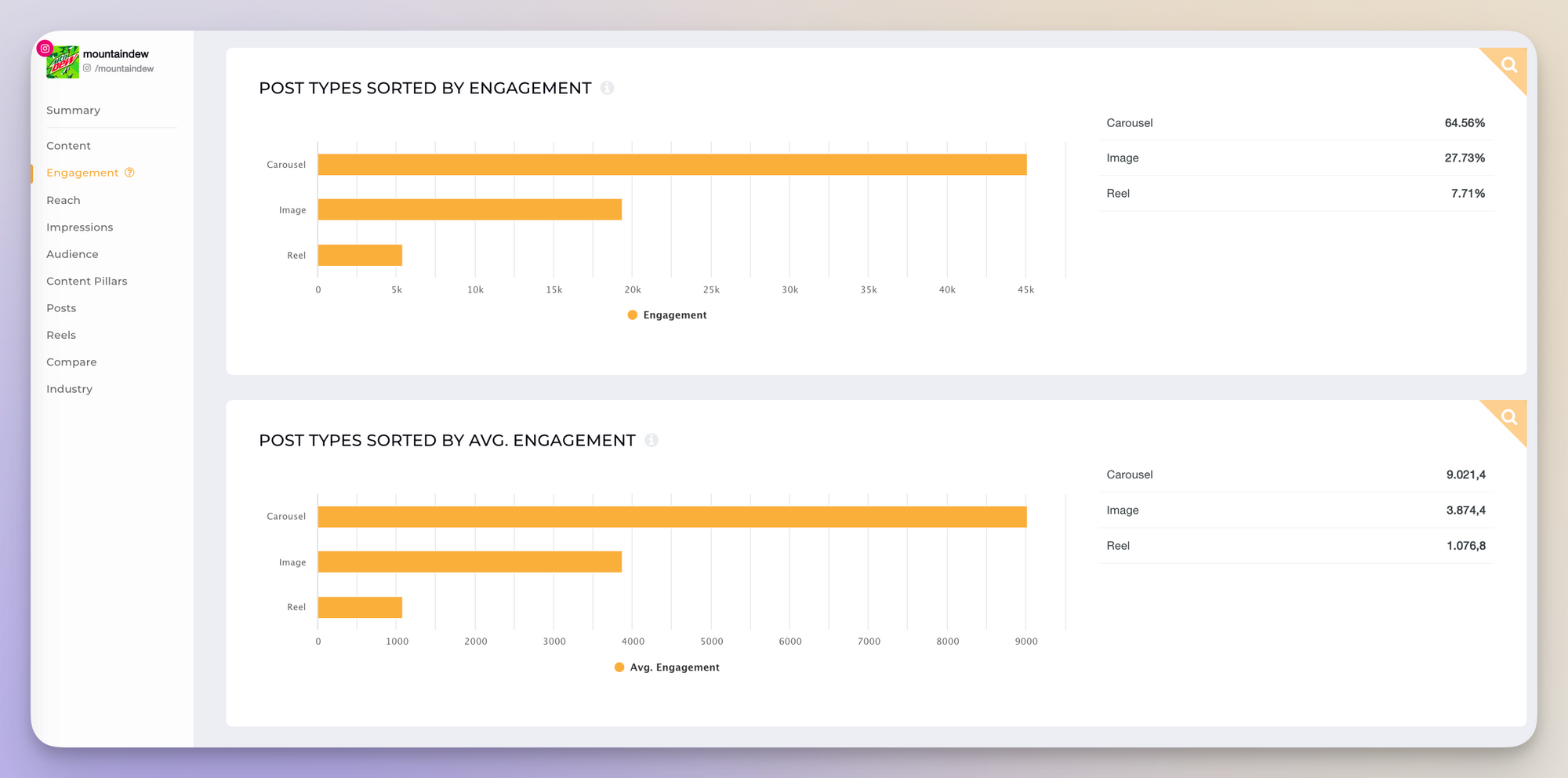
Collaborate with influencers
One of the most powerful ways to reach new audiences and drive organic growth on social media is partnering with influencers and deploying organic influencer marketing strategies.
Leveraging the influence and reach of influencers in a particular industry will surely increase brand awareness, web traffic, and lead generation.
Influencers, per definition, have a robust and engaged following that brands can tap into to reach new customers. Influencers are seen by their peers as trusted sources of information, which helps a brand build credibility and trust with its audience. Influencer partnerships drive social media engagement and increase reach.

When looking to work with influencers, look for those who align with the brand values and have an audience that overlaps with the brand’s target market.
Remember, the number of followers does not equal influence! Before hiring, connect with influencers and establish a relationship with them. Develop a partnership that benefits both the brand and the influencer. This could include sponsored content, product giveaways, or other collaborations.
Do not forget to track essential data, such as engagement metrics and other key performance indicators, to measure the success of the influencer partnerships.
In addition, ask the influencers for their data and feedback on the overall campaign to assess its effectiveness before hiring additional influencers to work with.
Start a brand ambassador program
A brand ambassador program is a highly effective way to grow your social media accounts, as working with brand ambassadors will help you quickly grow your social media followers. This differs from paying influencers for one-off projects, as there are many organic growth advantages when working with brand ambassadors.
The most loyal customers of your social media audience in a community often make the best brand advocates. They facilitate amplifying a brand’s reach, increase brand awareness, and generate valuable user-generated content, thus growing your social media presence.
Brand ambassadors are already passionate about the brand before getting paid and can share genuine experiences with an audience. They are advocates for the brand, recommending products or services to their friends and family.
Brand ambassadors create valuable user-generated content that can be shared on a brand's social media channels in addition to theirs.
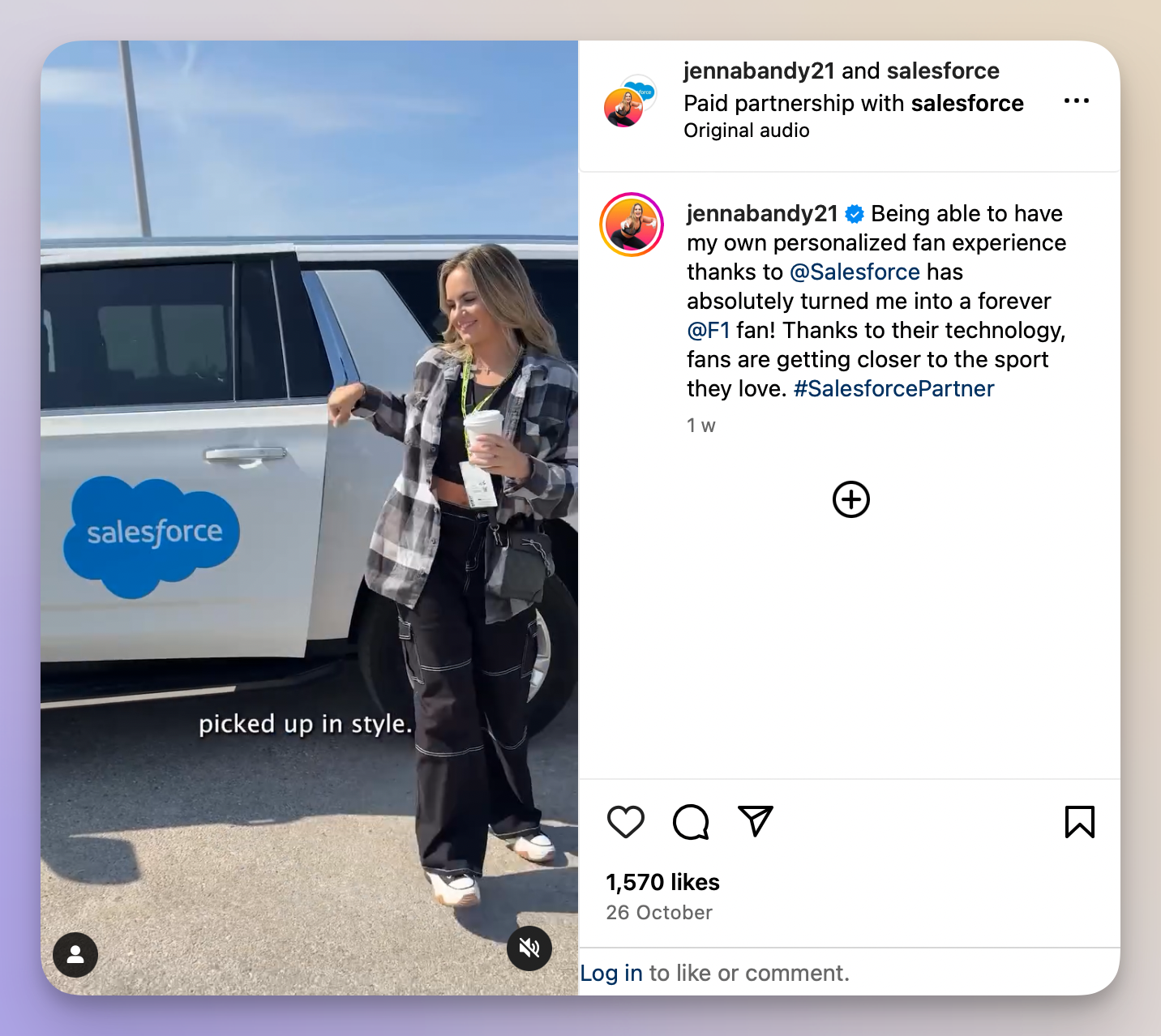
Creating a brand ambassador program from scratch is no easy feat! The easiest way to do this is to look for current customers who are passionate about the brand and actively engaged with the content.
Providing incentives for your ambassadors, such as discounts, exclusive products, and in-person experiences, will often set off a furry of wanna-be brand ambassadors.
Be sure to equip them with the tools and resources they need to be successful. Someone must monitor the ambassadors' online activities and measure their impact on the brand. Without data, the success of the campaign can not be measured.
Master the algorithm
While algorithms constantly evolve, some general principles can be followed to optimize content for visibility. Each platform's unique algorithm determines which content appears in their users' feeds. To optimize content for visibility and reach increase, an understanding of how the socials algorithms work is imperative.
Mastering platform’s algorithms is a constant work in progress and is challenging. It is one of the most talked about social media marketing challenges among social media professionals. Algorithms work differently on different channels; thus, there is much to learn!
Here are some ways to get started:
- Create high-quality content that is engaging, relevant, and valuable to users.
- Interact with followers by responding to comments, messages, and mentions.
- Use eye-catching images and videos to grab users' attention.
- Experiment with different posting times to find the optimal times.
None of these tactics guarantee to outsmart the algorithms, but you might just outsmart your fellow marketers!
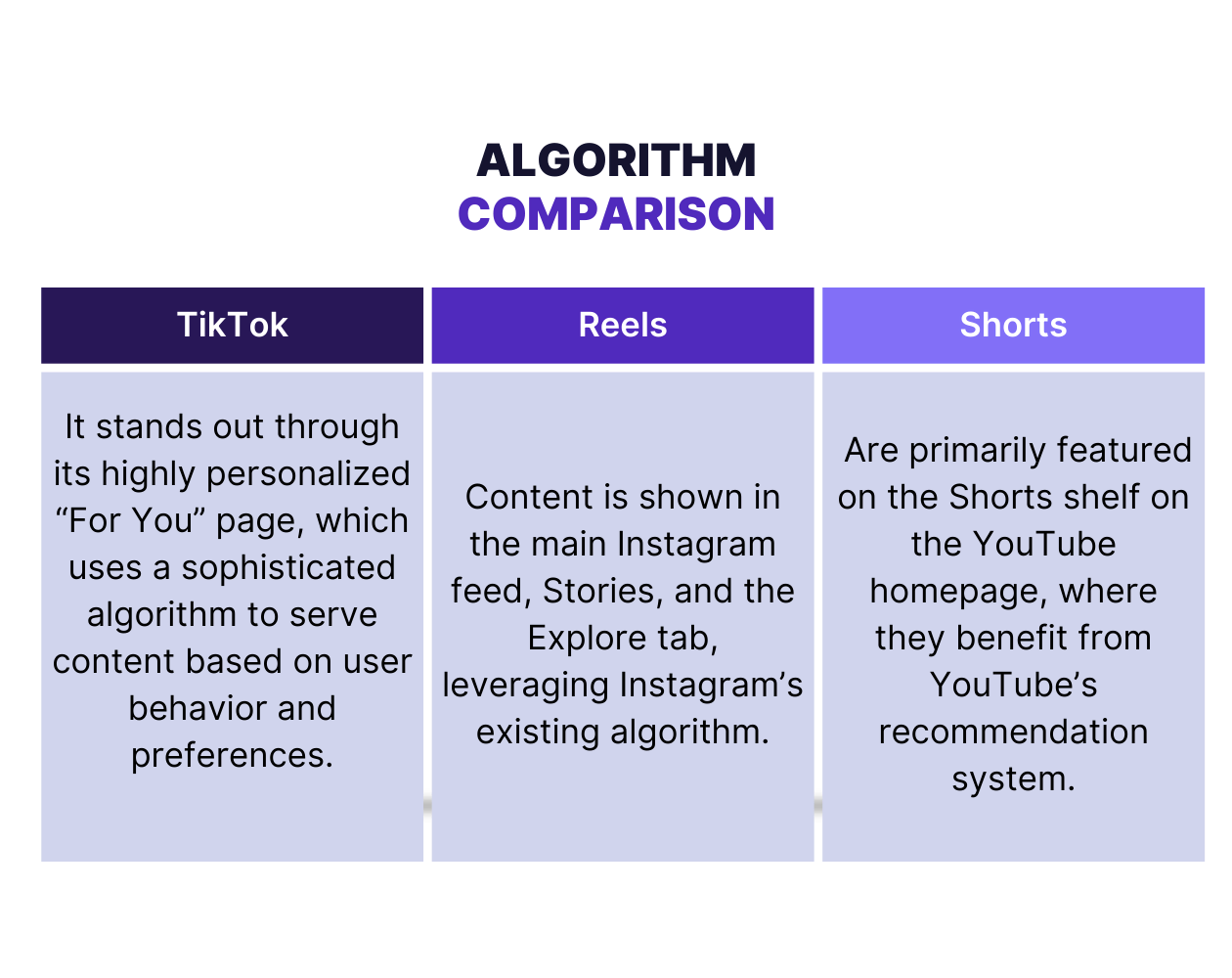
Bonus tips on how to fuel social media growth
Are you ready to supercharge your social media growth? Here are our bonus tips for fueling social media growth, fast!
Integrate video content into your organic social strategy
Videos perform well on all platforms and can help you increase engagement, reach, and conversions.
Short-form video is often easier and faster to create than long-form video and can be posted to nearly all channels.
Consider using platforms like TikTok, Instagram Reels, YouTube Shorts, Facebook Reels, and LinkedIn to create engaging and shareable video content.
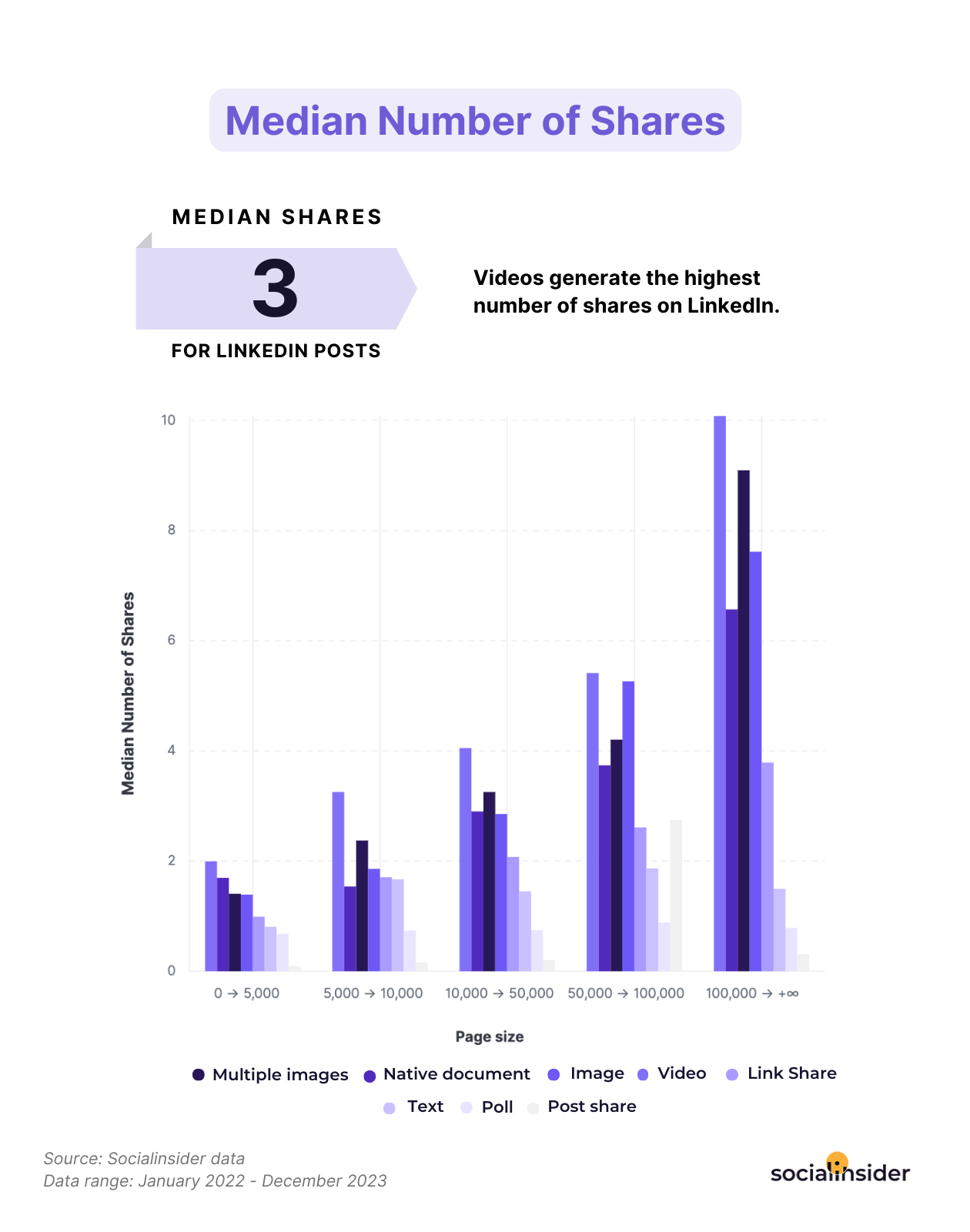
Create a series of content pieces that belong to the same narrative or story
Creating a series of content pieces that belong to the same story is a powerful strategy for engaging your audience. By creating a sense of anticipation and excitement, you can encourage your audience to follow along and consume multiple pieces of content.
This approach is particularly practical on platforms like TikTok, where viewers can easily binge-watch a series of videos. With careful planning, this strategic move can also be applied to other platforms like YouTube, Instagram, and Facebook.
Create search-driven content
There is great power in creating search-driven content and posting it on a platform like TikTok, which increasingly functions like a search engine.
Focus on creating content that directly answers user questions and tackles specific topics, significantly boosting your discoverability.
By providing valuable, targeted content, you'll attract viewers actively searching for information and keep them engaged with your offerings.
Leverage hot social media trends
Leverage social media trends to boost organic reach and engagement.
Start by Identifying trends that align with your niche and resonate with your target audience. Avoid jumping on every trend for its sake; focus on relevant and meaningful trends for your business and industry.
You can capture your audience's attention and drive organic growth by staying up-to-date with the latest trends and incorporating them into your content strategy.
Examples of organic growth achieved by B2B brands
If you want to know how to grow your brand on social media, look no further!
The following are three brilliant examples of B2B brands that have mastered organic social media marketing. They know how to grow social media organically, and consistently increase organic reach and understand how to grow a social media following. These brands all understand the value of organic social and all it brings to the table.
Perfect examples of how to grow your social media presence as a B2B company include the following:
- Salesforce
- Zendesk
- IBM
Salesforce
Do you want to know how to get people’s attention on social media?
Showcase real humans.
Salesforce has humanized its brand by showcasing its employees! They are a perfect example of how a B2B can grow followers organically with a straightforward employee-focused growth strategy.
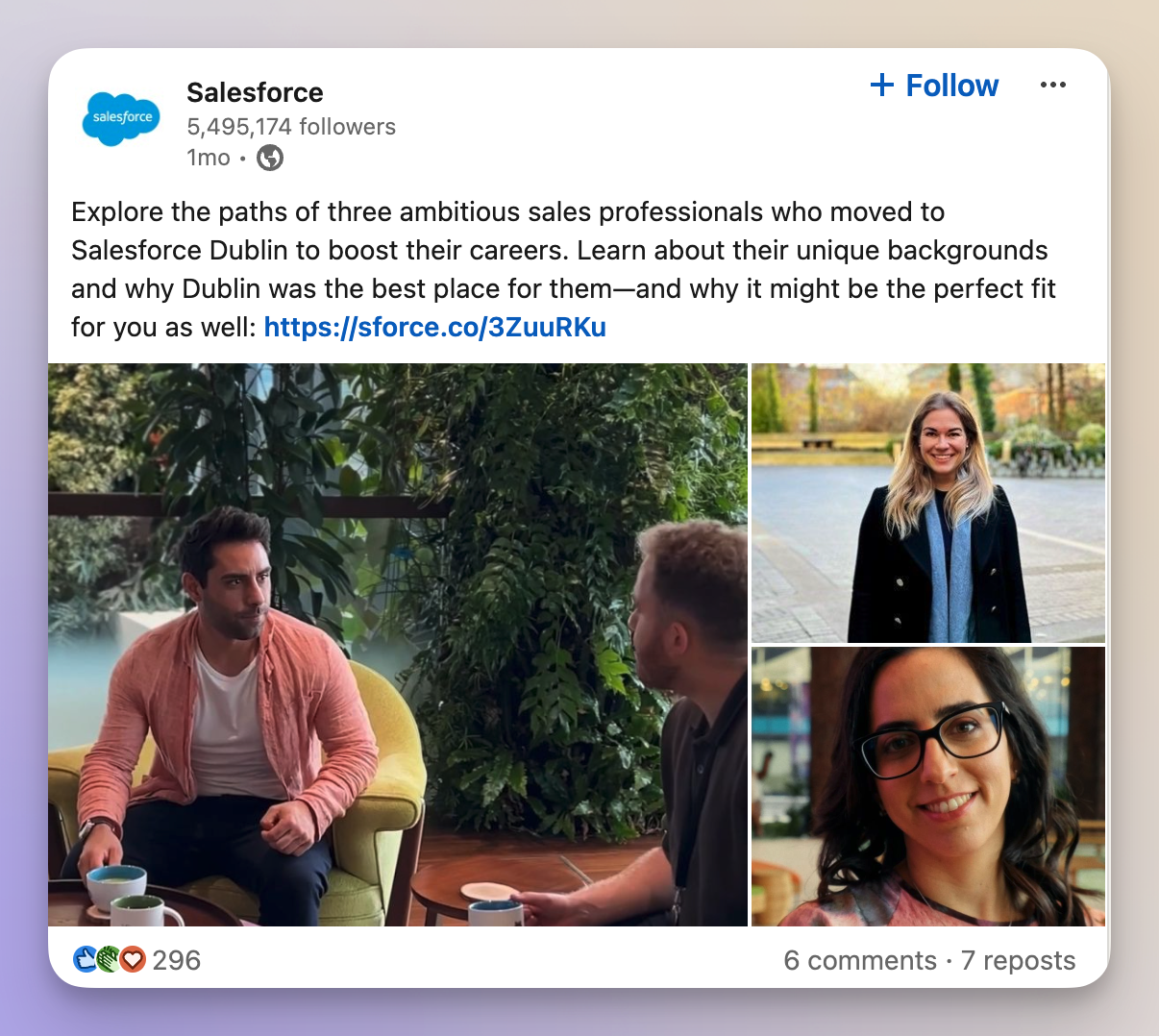
Zendesk
Zendesk is showcasing its customer success stories by creating videos where customers are filmed giving testimonials. They have set up an excellent content flow for repurposing these testimonials: embed videos into blog posts, add video to a playlist on YouTube, and release clips as YouTube shorts!
They are one of several organic growth examples showcasing how to build an audience on social media as a B2B, taking advantage of specific customer feedback to grow a social media account.
Customer feedback is essential for learning how to build an audience on social media, as social listening is a powerful tool for organic growth and a growth strategy that many B2B’s miss! Zendesk is a perfect example of how a B2B can grow followers organically with a straightforward customer-focused growth strategy.
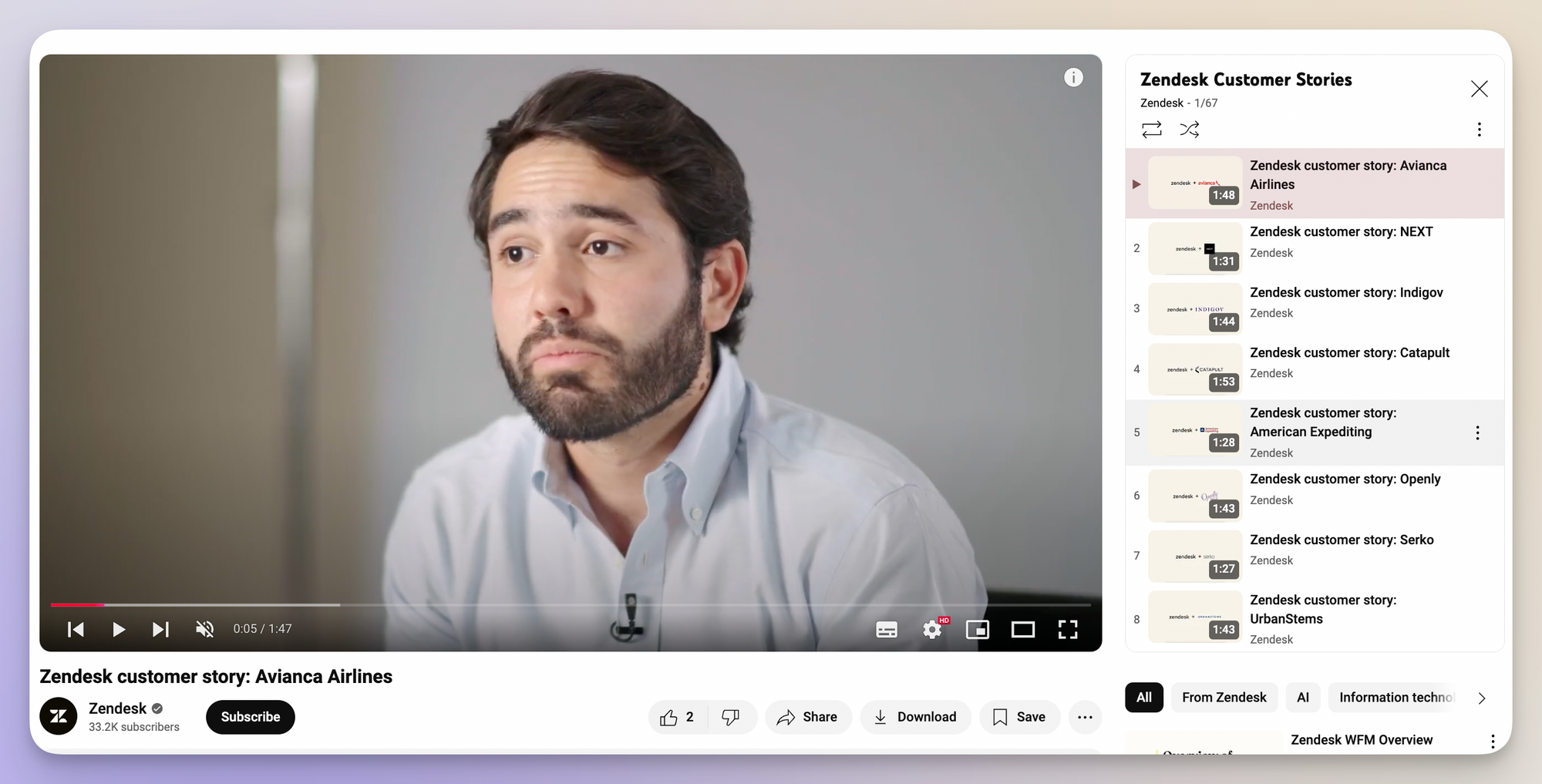
IBM
The tech giant IBM has dedicated Instagram and YouTube accounts showcasing ‘Life at IBM.’ It’s a perfect example of an employee Influencer program growth strategy that works. An employee influencer speaks to their peers and drives follower growth.
Growing on social media has never been this fun (and easy)! IBM showcases how a B2B can grow followers organically with a straightforward employee-generated content growth strategy.
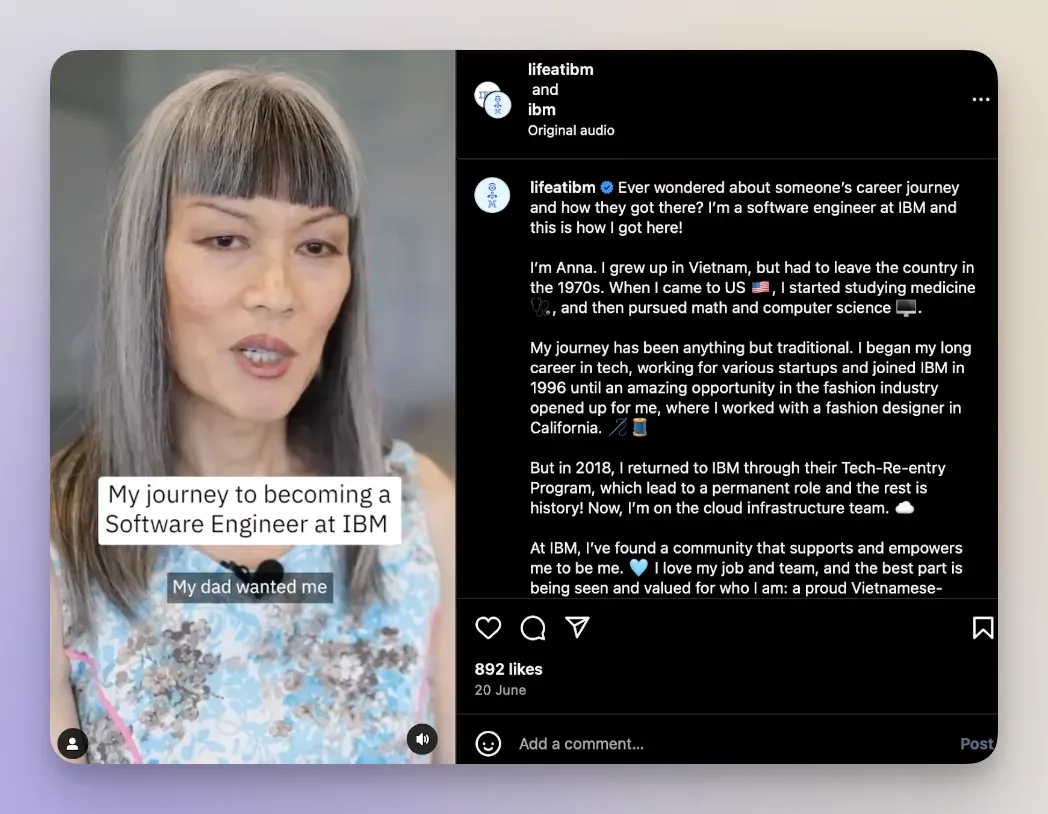
Do you see a pattern with all three of these B2B companies used in the examples?
They all prioritize showcasing humans! Salesforce showcases their employees’ knowledge and lets them shine as spokespersons. Zendesk highlights and celebrates its customers, while IBM highlights employees as content creators and influencers to showcase company culture and work environment.
Final thoughts
We started by saying that an organic social strategy needs to be aligned with paid media strategies and that overall business goals are needed for organic growth strategies to work and be able to measure social media organic reach and growth!
To see growth, you must measure the status quo and then measure growth consistently. How often data checks are needed depends on your budget and resources. It’s recommended to perform a weekly spot check at a minimum, ensuring positive movement.
It should go without saying, but let’s say it anyway. The MORE of these organic growth strategies are deployed simultaneously, the more exponential growth a brand will see.
FAQs on social media organic growth
How effective is organic social media marketing?
Organic social media marketing is highly effective if executed strategically and is data-driven from start to finish. When the goal is growing on social media. Growth should be detected immediately as soon as new strategies are deployed, with overall growth success being determined by a brand’s effort, budget, and resources.
Is organic better than paid?
Organic media is not better than paid media; it is different. Organic and paid play so well together it is recommended that brands combine these two for a win-win overall marketing strategy!
Why is organic growth important?
The advantages of organic growth are many. Organic social media is a way to connect with an audience naturally and in due time. Organic growth is significant as each new follower indicates a true human-to-human connection with your intended audience.
How fast does organic generate results?
Organic social media generates results almost instantly, evidenced by increased reach, engagement, and audience growth. Results depend on several factors, including overall audience growth strategy, tactics implemented, budget, resources, marketing team expertise, and more!#1








